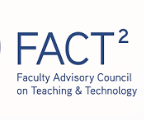
This sub-group collected evidence of best practices in assessment using non-traditional methods for student assessment specifically around allowing students multiple ways to progress through the course depending on their preferred learning methods or assessments. The group identified four main groups of methods for allowing students to do this: 1) Specifications Grading, 2) Contract Grading, 3) Gamification, and 4) Adaptive Learning.
Subgroup members collect faculty insight, examples, and rubrics to assist in the assessment of student learning using different modalities. This will help students learn in various modalities to better develop their subject area knowledge and give them flexibility in their courses. Having this flexibility will give students the skillsets needed to succeed in their future academic goals.
Specifications Grading
Adding value by earning grades through use of rubrics that directly links course grades to achievement of learning goals. This encourages students to learn from their mistakes by grouping learning goals that reflect student learning outcomes through scaffolding of learning while putting the oneness of learning on the student.
Contract Grading
“Decouple[s] evaluation from grades” (Elbow and Danielewicz, 10), and instead, gives students grades based on their work or labors. Students’ labors might include completing homework assignments, attending and participating in class, turning in assignments, drafts and revisions on time, and turning in a specific page-requirement for each assignment.
Gamification
Describes the process of applying game-related principles — particularly those relating to user experience and engagement — to non-game contexts such as education. This includes measurement of – Spatial Ability, Verbal Ability, Executive Functions, Prior knowledge, Learning Strategies, Goal Orientation, Self-Regulation, Situation-Specific Engagement, Emotion, Cognitive Load, Situational Interest), Learning Behaviors, Learning Behaviors: (mouse clicks, exploration strategies), or Learning Outcomes: Skills & Competencies.
Essential diagnostic activities include:
Evidence-Centered Design (Mislevy et al)
Student/Competency Model (what should be assessed?)
Evidence Model (what behaviors reveal these constructs?)Task Model (what tasks should elicit these behaviors?)
“Proximity” or “Just in Time”Model When should tasks be assessed? Before, during or after a task, or a combination of those, depending on task, context and educational goal.
Learners apply rules to solve problems
Learner chooses how different items are to be arranged in space and time in order to solve a problem
Learner selects different items that belong to each other in time or space
Assessment Mechanics Requirements for Designing Game Mechanic are based on:
Reduce extraneous cognitive load
Consider germane cognitive load/mental effort
Other confounds:Fine motor skills, Content knowledge or skills, Emotional Response
Adaptive Learning
This includes the use of custom learning experiences that address the unique needs of an individual through just-in-time feedback, pathways, and resources (rather than providing a one-size-fits-all learning experience).
